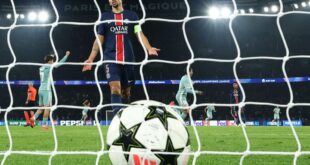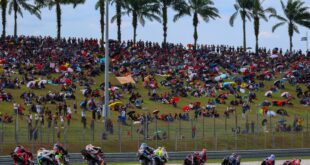PARIS (Reuters) – Paris 2024 organisers are confident a solution will be found quickly for the construction of a judging tower that will allow them to finalise plans for the surfing competition at next year’s Olympics to be held in Tahiti’s Teahupo’o site.
Earlier on Wednesday, the International Surfing Association (ISA) welcomed a pause in preparations for the construction of the tower in Tahiti after local opposition said a barge had damaged coral near the site.
A video posted on Instagram last Saturday by Save Teahupo’o Reef, a coalition of locals, surfers and environmental NGOs, appeared to show a barge stuck on the reef, along with broken coral and its damaged propeller.
It prompted the French Polynesian government to “pause all further testing and preparations to draw lessons following the incident on the reef.”
Paris 2024, however, believes the matter will be settled soon.
“The French Polynesian Government and Paris 2024 are working on solutions that will enable the new tower to be set up which has been reduced in size and weight,” Paris 2024 said in a statement to Reuters.
“This was the result of collective effort between Paris 2024 and French Polynesian government to reduce the impact of the tower on the natural environment. Technical meetings organised with all those involved in the project, and guided by the project manager on site, should enable solutions to be found rapidly.
“With less than a year to go before the surfing events are due to be held in Teahupo’o, those involved in the project are reaffirming more than ever their desire to work with the associations in a transparent manner to ensure that the Paris 2024 Games are a success for French Polynesia.”
In October, residents of Teahupo’o protested against plans by Games organisers to build a 14 metre aluminium tower that would allow up to 40 people to watch, film and judge the surfing at a famed break in front of the village.
Organisers, including Paris 2024 and the French Polynesia government, said last month they had decided that building a smaller, lighter tower on the site was the best option. This would allow for smaller installation equipment but would still require new foundations in the reef.
(Reporting by Julien Pretot; Editing by Toby Davis)
 BeritaKini.biz Berita Viral Terkini di Malaysia
BeritaKini.biz Berita Viral Terkini di Malaysia





